I have a tree visualisation in which I am trying to display paths between nodes that represent a distribution with multiple classes. I want to split the path lengthwise into multiple colours to represent the frequency of each distribution.
For example: say we have Class A (red) and Class B (black), that each have a frequency of 50. Then I would like a path that is half red and half black between the nodes. The idea is to represent the relative frequencies of the classes, so the frequencies would be normalised.
My current (naive) attempt is to create a separate path for each class and then use an x-offset. It looks like this.
However, as shown in the image, the lines do not maintain an equal distance for the duration of the path.
The relevant segment of code:
linkGroup.append("path").attr("class", "link")
.attr("d", diagonal)
.style("stroke", "red")
.style("stroke-width", 5)
.attr("transform", function(d) {
return "translate(" + -2.5 + "," + 0.0 + ")"; });
linkGroup.append("path").attr("class", "link")
.attr("d", diagonal)
.style("stroke", "black")
.style("stroke-width", 5)
.attr("transform", function(d) {
return "translate(" + 2.5 + "," + 0.0 + ")"; });
It would be great if anyone has some advice.
Thanks!
